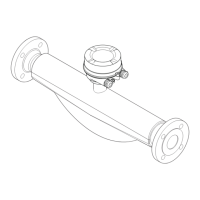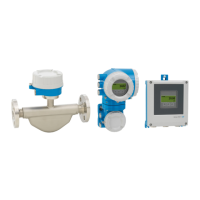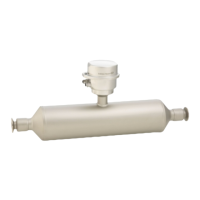PROline Promass 80 3 Installation
Endress+Hauser 15
The proposed configuration in Fig. 5, however, permits installation in a vertical pipeline.
Pipe restrictors or the use of an orifice with a smaller cross-section than the nominal
diameter prevent the sensor from running empty during measurement.
Fig. 5: Installation in a vertical pipe (e.g. for batching applications)
1 Supply tank
2 Sensor
3 Orifice, pipe restrictions (see Table)
4Valve
5 Batching tank
System pressure
It is important to ensure that cavitation does not occur, because it would influence the
oscillation of the measuring tube. No special measures need to be taken for fluids which
have properties similar to water under normal conditions.
In the case of liquids with a low boiling point (hydrocarbons, solvents, liquefied gases)
or in suction lines, it is important to ensure that pressure does not drop below the vapour
pressure and that the liquid does not start to boil. It is also important to ensure that the
gases that occur naturally in many liquids do not outgas. Such effects can be prevented
when system pressure is sufficiently high.
Consequently, it is generally best to install the sensor:
• downstream from pumps (no danger of vacuum),
• at the lowest point in a vertical pipe.
Promass F, M, E / DN 8 1525405080
1)
100
2)
150
2)
Ø orifice / pipe restriction 6 mm 10 mm 14 mm 22 mm 28 mm 50 mm 65 mm 90 mm
1)
Promass F, M only
2)
Promass F only
Promass A / DN 124
Ø orifice / pipe restriction 0.8 mm 1.5 mm 3.0 mm
Promass H, I / DN 8 15 15
1)
25 25
1)
40 40
1)
50
Ø orifice / pipe restriction 6 mm 10 mm 15 mm 14 mm 24 mm 22 mm 35 mm 28 mm
1)
DN 15, 25, 40 “FB” = Full bore versions of Promass I
F06-xxxxxxxx-11-00-00-xx-002

